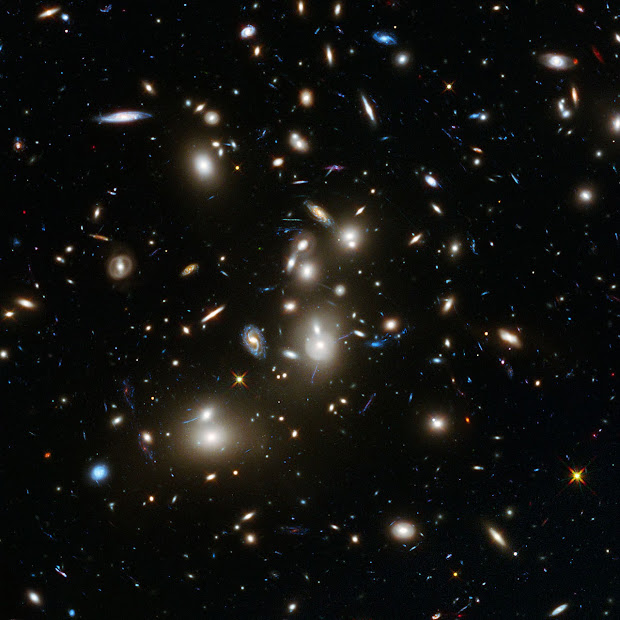Click on the image for full resolution (8.1 MB)
This image of Abell 2744 is the first to come from Hubble's Frontier Fields observing programme, which is using the magnifying power of enormous galaxy clusters to peer deep into the distant Universe. Abell 2744, nicknamed Pandora's Cluster, is thought to have a very violent history, having formed from a cosmic pile-up of multiple galaxy clusters. Abell 2744 is the first of six targets for Frontier Fields. This three-year, 840-orbit programme will yield our deepest views of the Universe to date, using the power of Hubble to explore more distant regions of space than could otherwise be seen, by observing gravitational lensing effects around six different galaxy clusters.
Astronomers previously observed Abell 2744 with the Hubble Space Telescope back in 2011, exploring the cluster's history. They found that at least four galaxy clusters had crashed into one another to form Abell 2744, causing some weird and wonderful effects. This mix of cosmic phenomena, some of which had never been seen before, led to the nickname of Pandora's Cluster. A mix of hazy elliptical galaxies and colourful spirals can be seen clumping together in the center of this image. The effects of the cluster's gravity can be seen in the blue arcs and distorted shapes that are scattered across the frame, including galaxies that seem to be bleeding into the surrounding space.
The arcs are actually the distorted images of galaxies far in the distance. Gravitational lensing is a phenomenon caused by an object's influence on the space-time around it. Massive objects like galaxy clusters warp and distort this space-time. This causes light from more distant objects hidden behind this makeshift lens to be deflected and bent, leading to a bizarre array of optical effects - for example, it caused a cosmic space invader to appear around cluster Abell 68 by creating mirror images of one galaxy, as well as smearing galaxies out into arcs, and creating multiple images of individual objects.
Image Credit: NASA, ESA, and J. Lotz, M. Mountain, A. Koekemoer, and the HFF Team (STScI)
Image enhancement: Jean-Baptiste Faure










0 comment(s):
Post a Comment